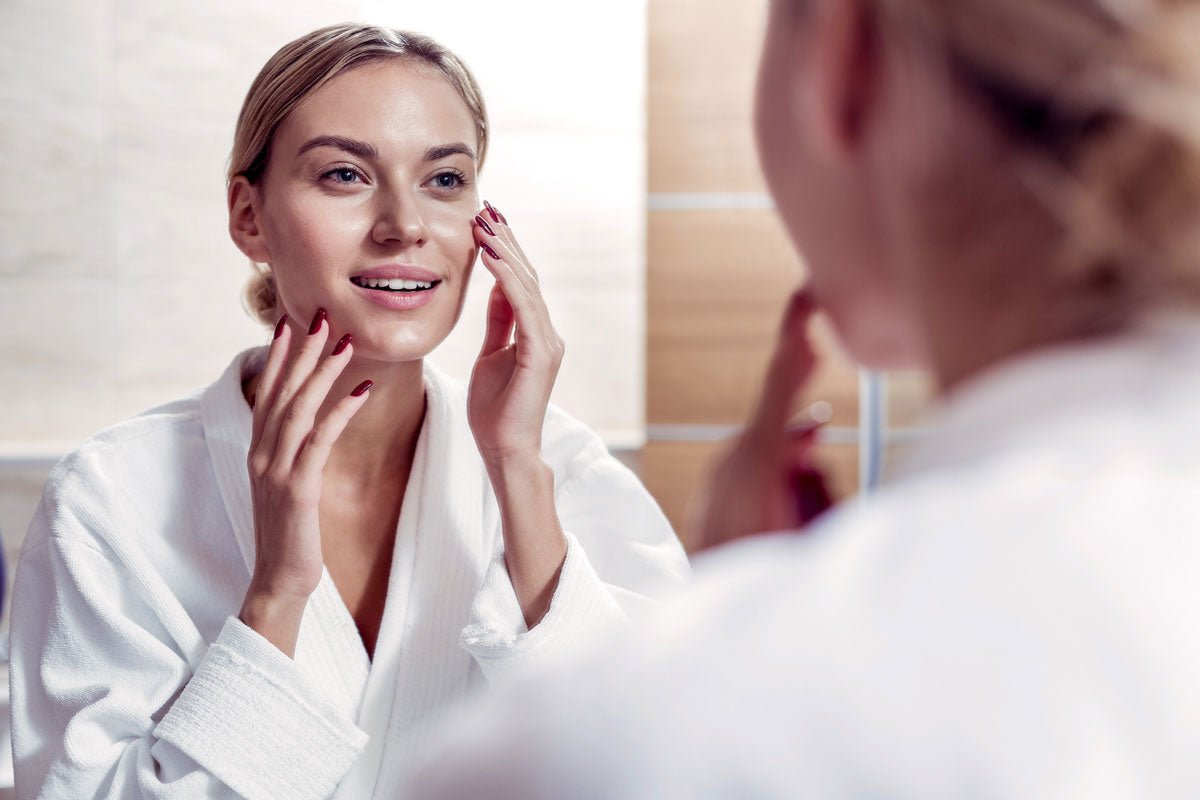Did you know: melasma affects about 5 million people in the United States alone, and it's particularly common among women? It is a chronic skin condition where there are brown or grayish-brown patches on the face. It often comes as a surprise and can be very difficult to treat.
Commonly affected areas include the cheeks, bridge of the nose, forehead, chin, and above the upper lip. Occasionally, melasma can also develop on other sun-exposed parts of the body, such as the forearms and neck.
It is more common in women, and typically manifests during the reproductive years and in those taking hormonal contraceptives. Understanding why it happens and knowing the best treatment options will help you have clear, even skin tone all year round. There are new options to help control it which makes it especially important to speak with your dermatologist about options that may be right for you.
Causes of Melasma
Melasma is caused by a combination of genetic, hormonal, and environmental factors:
1. Sun Exposure: Ultraviolet (UV) rays stimulate melanocytes, the skin cells responsible for pigment production. Excessive sun exposure triggers an overproduction of melanin, leading to the dark patches characteristic of melasma. Even 5 minutes on a cloudy day can trigger or worsen it.
2. Hormonal Changes: Hormonal fluctuations, such as those experienced during pregnancy, menopause, or while taking oral contraceptives, can trigger melasma. Interestingly, it can take several years after starting hormonal contraceptives for melasma to appear. This hormonal connection is why the condition is often called the "mask of pregnancy."
3. Genetic Predisposition: A family history of melasma increases the likelihood of developing the condition, indicating a genetic predisposition.
4. Medications and Cosmetic Products: Certain medications, including anticonvulsants, and some skincare products can heighten skin sensitivity to sunlight, exacerbating melasma.
5. Heat: heat alone, even without UV rays can also trigger or worsen melasma. This includes saunas and hot yoga, among other activities.
Melasma vs Other Forms of Hyperpigmentation
While melasma is a type of hyperpigmentation, it is distinct from other forms due to its specific triggers and patterns of appearance. And melasma is often more difficult to treat, and needs to be treated differently than other forms of hyperpigmentation:
· Post-Inflammatory Hyperpigmentation (PIH): PIH occurs as a result of skin injury or inflammation, such as acne, eczema, or trauma. Unlike melasma, which is primarily hormone and sun-induced, PIH can appear anywhere on the body and presents as flat spots or patches that range from tan to dark brown in color.
· Solar Lentigines (Age Spots, Sun Spots): These spots are caused by cumulative sun exposure over time, leading to flat, brown, or black spots that typically appear on areas exposed to the sun, such as the face, hands, shoulders, and arms. Unlike melasma, solar lentigines are more common in older individuals.
Prevention of Melasma
Preventing melasma primarily revolves around diligent sun protection and avoiding known triggers:
1. Daily Sunscreen Use: Apply a broad-spectrum sunscreen with an SPF of 30 or higher every day, regardless of the weather. Reapply at least every two hours when outdoors.
2. Protective Clothing: Wear wide-brimmed hats, sunglasses, and long-sleeved shirts to provide additional protection against UV rays.
3. Seek Shade: Minimize sun exposure, especially during peak hours from 10 a.m. to 4 p.m.
4. Avoid Tanning Beds: Tanning beds can also contribute to skin damage and worsen melasma.
5. Avoid Heat Exposure: Heat-based treatments such as laser therapy, hot saunas, hot yoga, and other activities that generate heat can exacerbate melasma. Heat can stimulate melanocytes, leading to increased pigmentation.
Treatment of Melasma
While melasma is a chronic condition with no definitive cure, various treatments can help manage and reduce its appearance:
1. Topical Medications: Prescription creams containing hydroquinone, tretinoin, corticosteroids, or a combination of these can lighten melasma. These treatments should be used under the guidance of a dermatologist.
2. Chemical Peels: Procedures using glycolic acid or other chemical exfoliants can improve melasma by removing the outer layers of skin.
3. Laser and Light Therapies: Certain laser treatments can target melanin, breaking it down and reducing the appearance of melasma. However, these treatments carry risks, particularly if heat-based, as they can potentially worsen melasma if not administered carefully. We use specific, personalized skin care ingredients immediately post treatment in order to optimize outcomes and reduce downtime.
4. Microneedling: This procedure involves creating micro-injuries in the skin with tiny needles, which can enhance the absorption of topical treatments and stimulate collagen production. We use specific, personalized skin care ingredients immediately post treatment in order to optimize outcomes and reduce downtime.
5. Oral Medications: In some cases, oral medications such as tranexamic acid can be prescribed to help manage melasma from within.
Bottom Line
Melasma is a persistent and challenging skin condition, but with the right knowledge and approach, it can be effectively managed. By understanding its causes, taking preventive measures, and seeking appropriate treatments, you can control and reduce the appearance of melasma.









